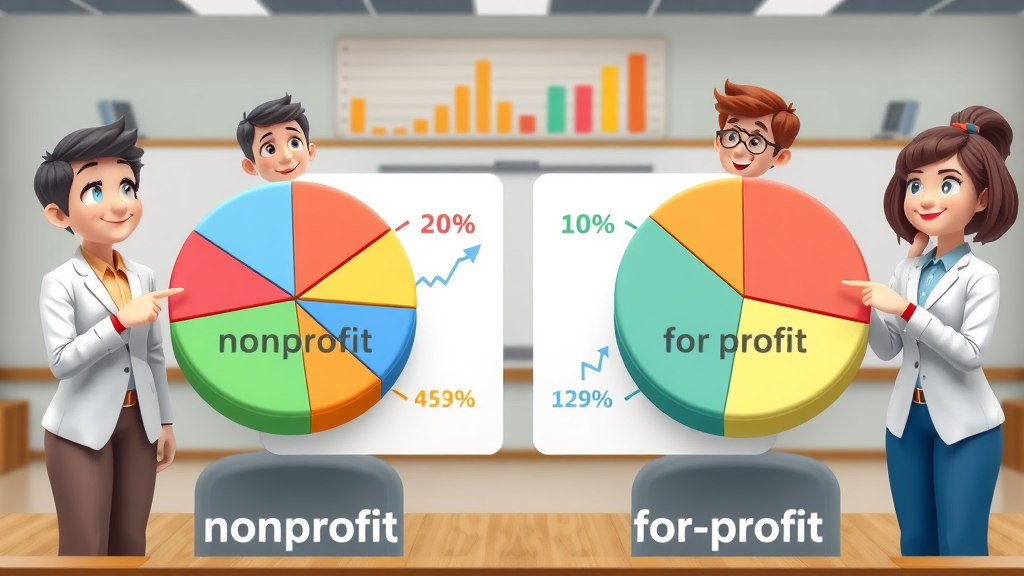Startling Statistic: Did you know that over half of nonprofit organizations face recurring cash flow challenges that threaten their operational stability? This sobering reality drives home the importance of mastering nonprofit cash flow management if you want your organization to thrive—even when funding is uncertain.

Startling Statistics: The Reality of Nonprofit Cash Flow Management
Across the sector, more than 50% of nonprofit organizations struggle with maintaining consistent cash flows. These cash flow challenges often lead to delayed programs, staff furloughs, or, in severe cases, organizational shutdowns. Unlike profit organizations, nonprofits frequently depend on unpredictable donation cycles and grant disbursements, making effective cash flow management for nonprofit organizations even more critical. By understanding the unique issues faced by nonprofits when managing cash, nonprofit leaders can better equip themselves to address these recurring financial pains and safeguard essential services for the communities they serve. Cash flow management isn’t a luxury—it’s mission-critical.
What You'll Learn in This Nonprofit Cash Flow Management Guide
- The importance of nonprofit cash flow management for financial stability
- How to read, analyze, and leverage cash flow statements
- Proven cash management strategies tailored for nonprofit organizations
- Common pitfalls and best practices in nonprofit financial management
- Frequently asked questions on managing cash for nonprofit organizations
Understanding Nonprofit Cash Flow Management and Its Significance
Defining Nonprofit Cash Flow Management for Nonprofit Organizations
Nonprofit cash flow management means tracking, forecasting, and directing how money moves in and out of a nonprofit organization. Unlike businesses seeking to maximize profits, nonprofits aim to fulfill a social mission, often juggling several restricted funds and juggling multiple revenue streams, including grants, donations, program fees, or government funding. This unique ecosystem makes cash flow management a top priority. Effective flow management involves not just recording each cash inflow and outflow but also strategically leveraging cash reserves and planning for seasonal variability. For nonprofit leaders, strong cash flow management is vital because unpredictable revenues can threaten sustainability—and, ultimately, your mission's success.
Comparing Nonprofit and Profit Organization Cash Flow Management
While both nonprofit and profit organizations must manage cash, their approaches diverge in key ways. For-profit organizations focus on maximizing returns for stakeholders, often relying on sales and investments for cash inflow. Conversely, nonprofit organizations must manage cash across lines with distinct financial statement requirements, navigating restricted funds and variable revenue streams like annual campaigns or grants. The nonprofit cash flow statement often reflects cycles of feast and famine, requiring leaders to adjust spending and maintain sufficient cash reserves to cover lean periods. Understanding these fundamental cash management differences is essential for nonprofit financial stability and sustainability over the long term.

Key Concepts: Cash Flow Statements and Their Role in Nonprofit Cash Flow Management
What is a Cash Flow Statement?
A cash flow statement is a core financial document that summarizes how cash moves through a nonprofit organization over a specific period, categorizing inflows and outflows into operating, investing, and financing activities. For nonprofits, the cash flow statement plays a pivotal role in flow management, helping leaders assess whether the organization has enough liquidity to meet program commitments and sustain operations. Unlike profit organizations, nonprofits must also track restricted funds—monies designated for specific uses—which adds layers of complexity to their financial analysis. Interpreting the cash flow statement helps ensure every cash management decision aligns with both compliance standards and mission-critical goals.
Structuring the Nonprofit Cash Flow Statement
A typical nonprofit cash flow statement breaks down income sources such as donations, grants, and program revenue, while detailing outflows, including salaries, operational expenses, and program costs. Notably, it distinguishes between unrestricted funds and restricted funds, which may only be used for pre-designated purposes. Accurate categorization of each revenue stream and clear separation of cash reserves are crucial for maintaining transparency and meeting regulatory requirements. Nonprofit leaders should regularly review and update these statements to spot trends, address shortfalls, and ensure their financial health is on track for both short-term needs and long-term mission success.
| Category | Cash Inflow | Cash Outflow | Net Cash Flow |
|---|---|---|---|
| Donations & Grants | $120,000 | - | $120,000 |
| Program Revenue | $35,000 | - | $35,000 |
| Salaries & Wages | - | $90,000 | -$90,000 |
| Operations & Supplies | - | $20,000 | -$20,000 |
| Restricted Funds Used | $10,000 | $10,000 | $0 |
| Net Position | $45,000 | ||

Why Nonprofit Cash Flow Management is Vital for Financial Stability
The sustainability of any nonprofit organization hinges on its ability to manage cash flow smoothly. Fluctuations in donations or delayed grant disbursements can threaten core program delivery, paying staff, or even keeping doors open. Proactive nonprofit cash flow management means monitoring, forecasting, and maintaining liquidity, so there are always enough resources to support ongoing and emergency needs. Financial stability allows nonprofit leaders to plan confidently, expand programs, and react swiftly to new opportunities or unforeseen challenges. The direct correlation between advanced flow management strategies and organizational resilience cannot be overstated—it's what sustains missions through challenging times.
"Without vigilant nonprofit cash flow management, even the most impactful organizations risk abrupt program freezes or closures." – Noted Nonprofit Financial Analyst
Critical Challenges: Common Nonprofit Cash Flow Management Issues
- Irregular revenue streams and insufficient cash reserves: Many nonprofits depend on unpredictable income, leading to occasional funding gaps that threaten stability.
- Seasonal donation cycles and delayed grant disbursements: These timing mismatches can create months with inadequate cash on hand, increasing risk.
- Complexity of restricted funds in flow statements: Tracking and using restricted funds properly is critical to staying compliant and meeting donor expectations.
- Gaps in cash management knowledge among nonprofit leaders: Many leaders need more training in advanced cash flow management strategies to optimize operations.

Nonprofit Cash Flow Management Strategies: Best Practices for Sustainable Operations
Effective Cash Management for Nonprofit Organizations
- Establishing and maintaining cash reserve thresholds: Set a minimum cash reserve level to weather unexpected expenses or revenue shortfalls.
- Forecasting cash flows and planning for seasonal variability: Use historical cash flow statements and trend analysis to predict and plan for cyclical highs and lows.
- Diversifying revenue streams and proactively tracking inflows: Develop multiple streams—events, grants, recurring donations—to provide stability and flexibility as you manage cash.
Implementing Cost Controls and Budget Monitoring
Cost controls and diligent budget monitoring are non-negotiables for nonprofit financial management. This means reviewing budgets versus actuals monthly, setting spending limits, and working with department heads or program leaders to stay on target. Integrating regular financial report reviews helps ensure that cash outflows never exceed inflows, supporting steady cash reserves. By keeping a close eye on spending and making real-time adjustments, organizations can avoid falling into deficit, improve cash flow, and continue prioritizing vital programs over administrative or nonessential expenditures.
"Managing cash for nonprofits requires adaptability, foresight, and a persistent focus on mission-critical expenses." – Nonprofit Finance Expert
Building Resiliency: Preparing for Cash Flow Emergencies in Nonprofit Organizations
Creating Contingency Plans and Managing Cash Reserves
Contingency planning is foundational for resilient nonprofit cash flow management. Start by defining a clear cash reserve policy—in most cases, targeting at least three to six months of operating expenses. Then, identify potential emergency funding sources, like lines of credit or special appeal campaigns, to bridge unexpected gaps. Documenting these plans in your organization's financial management toolkit ensures everyone knows how to react quickly during a crisis. Continually reassess and adjust these strategies as your organization grows or encounters new risks, making cash reserve planning a routine part of your annual financial report process.
Leveraging Technology for Nonprofit Cash Flow Management
- Overview of leading software for cash flow forecasting, financial statement automation, and donor management: Platforms like QuickBooks Nonprofit, Sage Intacct, and Bloomerang simplify data entry, provide real-time cash flow insights, and enable automated reporting.
- Tips on integrating cash management solutions into existing systems: Choose tools compatible with your accounting platform, offer customizable dashboards, and provide online training for nonprofit leaders and staff.

Case Studies: Nonprofit Cash Flow Management Success Stories
Real-life examples abound of organizations that turned around their financial health with improved cash management. For instance, a youth mentoring nonprofit continuously battled month-to-month cash shortfalls. After implementing a robust cash flow forecasting tool and establishing a policy for cash reserves, they closed revenue gaps, stabilized programs, and could scale confidently. Another environmental nonprofit diversified its revenue streams by launching year-round giving campaigns and pre-scheduling grant applications, cushioning against seasonal dips. Effective nonprofit cash flow management—paired with discipline and technology—can transform uncertainty into long-term organizational sustainability.
People Also Ask: Nonprofit Cash Flow Management FAQs
What is nonprofit cash flow management and why is it important?
Nonprofit cash flow management is the process of tracking, projecting, and guiding the movement of funds through a nonprofit organization to ensure stable, ongoing operations. This practice helps organizations maintain financial stability and avoid disruptions to vital services during periods of uneven cash inflow. Well-executed cash flow management also builds trust with funders and stakeholders by demonstrating responsible stewardship.
How can nonprofit organizations manage cash flow more effectively?
By forecasting inflows and outflows, diversifying revenue streams, and setting robust cash reserve policies tailored to their mission and scale, nonprofits can strengthen their financial stability. Using reliable financial report software, engaging nonprofit leaders in regular review of cash flow statements, and adopting best practices for restricted funds management can also help organizations manage cash flow more effectively and weather unexpected disruptions.
Maintaining Compliance: Regulatory Considerations in Nonprofit Cash Flow Management
Compliance with local, state, and federal regulations is essential for nonprofit organizations, especially related to financial reporting and stewardship of restricted funds. Nonprofits must properly document every cash flow statement, keep detailed financial reports, and ensure restricted funds are used according to donor intent and legal guidelines. Regular audits and transparent reporting not only protect against penalties but also enhance credibility and trust with donors, granting agencies, and the public.
Nonprofit Cash Flow Management Video Resources
Watch this explainer for an in-depth review of how to manage cash flow for nonprofit organizations, including practical cash management tips.
Nonprofit Cash Flow Management Checklists and Tools
- Monthly cash flow checklist for nonprofit organizations
- Flow management template for annual planning
- Key performance indicators for cash flow analysis

Key Takeaways: Mastering Nonprofit Cash Flow Management
- Cash flow management is critical for nonprofit financial sustainability
- Understanding and leveraging cash flow statements is essential
- Strategic planning and robust cash reserves mitigate risk
Frequently Asked Questions about Nonprofit Cash Flow Management
-
What are the main components of a nonprofit cash flow statement?
The nonprofit cash flow statement includes operating inflows (donations, program revenue), outflows (expenses, salaries), and the handling of restricted versus unrestricted funds. -
How do restricted funds affect nonprofit cash flow management?
Restricted funds can only be used for designated purposes and must be tracked separately, adding complexity to financial management and cash flow forecasting. -
What software solutions exist for nonprofit cash management?
Popular options include QuickBooks Nonprofit, Sage Intacct, Aplos, and Bloomerang, offering robust features for budgeting, forecasting, and donor management.
Conclusion: Empowering Your Organization Through Nonprofit Cash Flow Management
Nonprofit cash flow management is the bedrock of sustainable mission delivery. With informed strategies and a data-driven approach, your organization can thrive even in uncertain financial climates.
Call to Action: Expert Nonprofit Cash Flow Management Advice is a Call Away
Call me the Chaplain 786-333-5270 for tailored nonprofit cash flow management guidance and support.
Sources
- https://www.councilofnonprofits.org/tools-resources/managing-cash-flow-nonprofits
- https://www.tnpcpa.com/cash-flow-management-for-nonprofits/
- https://www.nolo.com/legal-encyclopedia/cash-flow-management-nonprofits.html
- https://www.foundationgroup.com/how-to-create-a-cash-flow-statement-for-nonprofit-organizations/
- https://bloomerang.co/blog/how-to-manage-nonprofit-cash-flow/
To deepen your understanding of nonprofit cash flow management, consider exploring the following resources:
-
“Cash Flow Management for Nonprofit Organizations”: This article outlines key challenges affecting nonprofit cash flow, such as timing of revenue and restricted funds, and offers strategies like developing detailed cash flow forecasts and implementing regular monitoring to enhance financial stability. (finance.googlexy.com)
-
“3 Strategies For Nonprofits To Maximize Cash Flow Management”: This piece emphasizes the importance of diversifying revenue streams, implementing efficient budgeting and forecasting practices, and optimizing treasury management to strengthen a nonprofit’s financial position. (forbes.com)
By integrating these insights, your organization can develop robust cash flow management practices, ensuring sustained financial health and the ability to fulfill your mission effectively.
 Add Row
Add Row  Add
Add 




Write A Comment